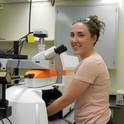
Other
Serial Dilutions and Plating: Microbial Enumeration
(2019)
Abstract
Quantitative assessment of prokaryotes can be onerous given their abundance, propensity for exponential proliferation, species diversity within a population, and specific physiological needs. Compounding this challenge, is the four-phase nature in which bacteria replicate (lag, log, stationary and death). The ability to accurately estimate microorganism concentration is necessary for successful identification, isolation, cultivation, and characterization (6). As such, microbiologists have employed serial dilution and various plating techniques for over a century to reliably quantify bacterial and viral load in clinical, industrial, pharmaceutical, and academic laboratory environments (2,4,6). Descriptions of this methodology first appeared in 1883 when the German scientist and physician Robert Koch published his work on infectious disease-causing agents (2). Often referred to as the father of modern bacteriology, Koch's forenamed techniques have become the gold standard for enumeration of microorganisms, culturable or otherwise, throughout the world.
Disciplines
Publication Date
2019
Citation Information
JoVE Science Education Database. Microbiology. Serial Dilutions and Plating: Microbial Enumeration. JoVE, Cambridge, MA, (2019).
